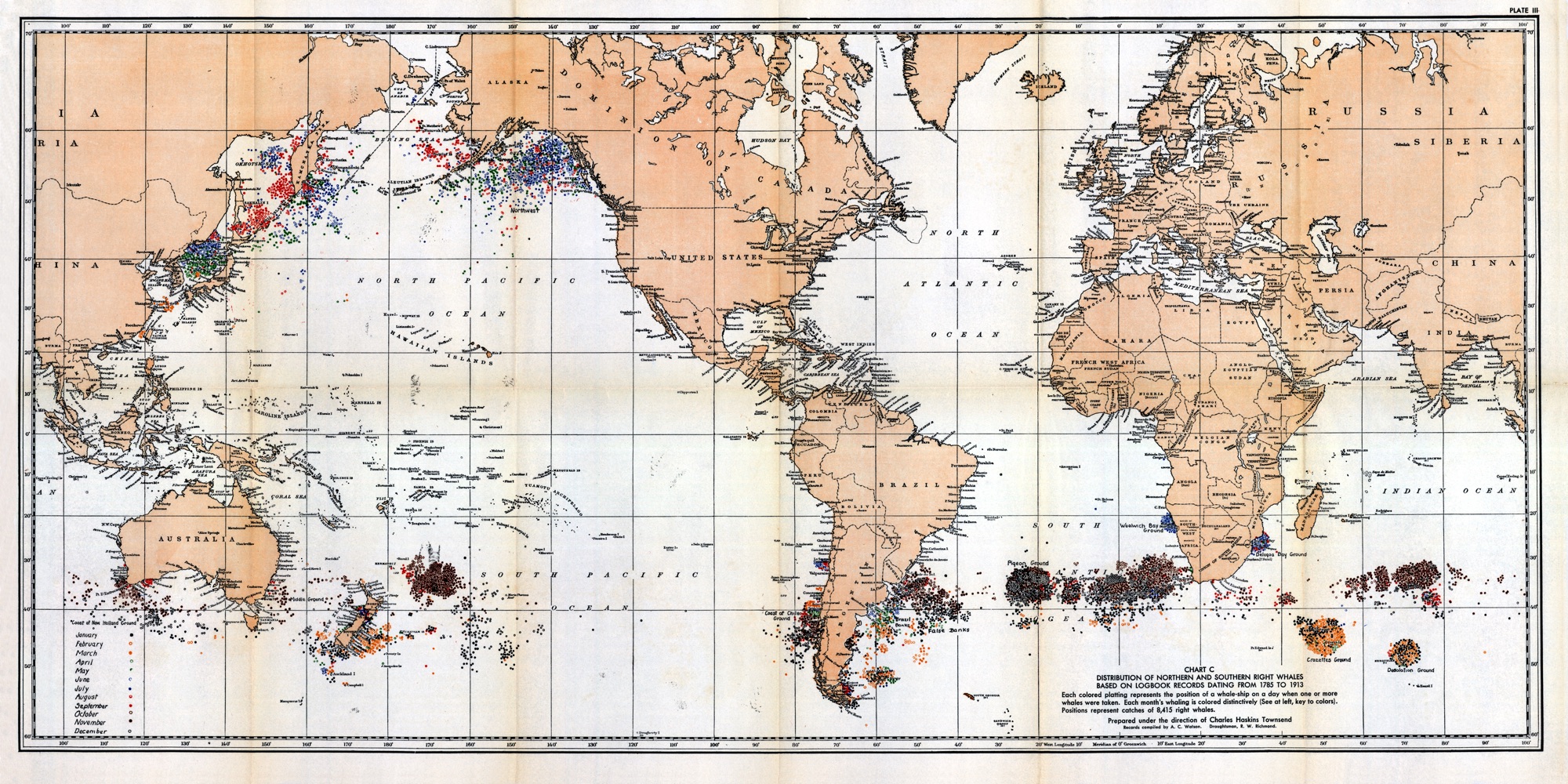
Right Whale Kills from Townsend 1935
Working up to this World Ocean Day I have been pondering the size of the ocean. We can only imagine how our early forebears beheld it from the shores – peering into a vast, seemingly endless horizon. If you’ve ever been out on the sea – really out, even on a very large vessel, you can feel really miniscule.
But human history is awash in intrepid souls willing to head out to find what was over that horizon. While history is unclear about the times that the various and many trans-oceanic explorers set out to find foreign lands, it has become generally accepted that some early explorers arrived in South America after navigating across what we know as the Pacific Ocean – perhaps even before the end of the last ice-age(!).
We also know that the Polynesians spread out into the islands of South-East Asia between 3000 – 1000 B.C.E. learning how the sea surface expressed the shape of the seafloor below – to the extent that they miraculously made their way to Hawai’i between 400 and 1000 A.C.E using both celestial and sea-surface queues – and likely shamanic instructions.
The Phoenicians had mastered the extents of the Mediterranean Sea beginning at the end of the Bronze Age some 1500 years B.C.E. They had discovered that magnetism predictably lined up with what we now call “north,” and they had the advantage of navigating a relatively modest-size body of water – of which from some common terrestrial altitudes you can see land across the horizon.
The Makah people have a legacy of navigating large ocean-going canoes well beyond land horizons. I spoke with a Makah elder who said they would navigate out into the ocean with songs, and find their way back “by singing the song in reverse.”
But the ocean has been getting smaller over the more recent history. The unimaginable size of the ocean, and what had been considered and infinite larder (and bottomless cesspool) has been succumbing to the unimaginable size of the human population.
A bit over 100 years ago, industrial whalers realized that it wasn’t that the whales were getting more clever at avoiding human predation; rather their populations were dwindling due to over-harvesting.
And in my youth there was an assumption that the ocean could somehow hold all of the sewage and detritus of human civilization. The phrase “dilution was the solution to pollution” was asserted – unfortunately bolstered by coastal oceanographic engineer, Willard Bascom, who seemed to believe that the ocean bottom beyond the Outer Continental Shelf was a vast desert devoid of features – and thus perfect for dumping.
We now know the folly of these assumptions, and the ocean is being divided up in hopefully more productive (and protective) ways. The current Administration has committed to join other nations in protecting 30% of the ocean by 2030.
This strategy could be advanced by Raul Grijalva’s Ocean Based Climate Solutions Act which is being reintroduced today – with a lot more co-sponsors. This strategy includes working with the natural “environmental services” provided by the ocean, instead of against them, to provide resilient shorelines, natural carbon sequestration, regenerative marine harvesting practices, and “Marine Protected Areas” (MPAs) – allowing (and encouraging) the natural resilience of the sea to take effect.
Human carelessness has done a lot of damage. But we can also do a lot of good if we set our minds (and our efforts) to it.

